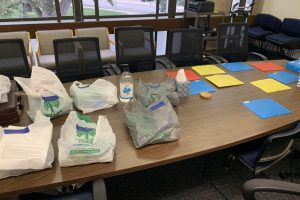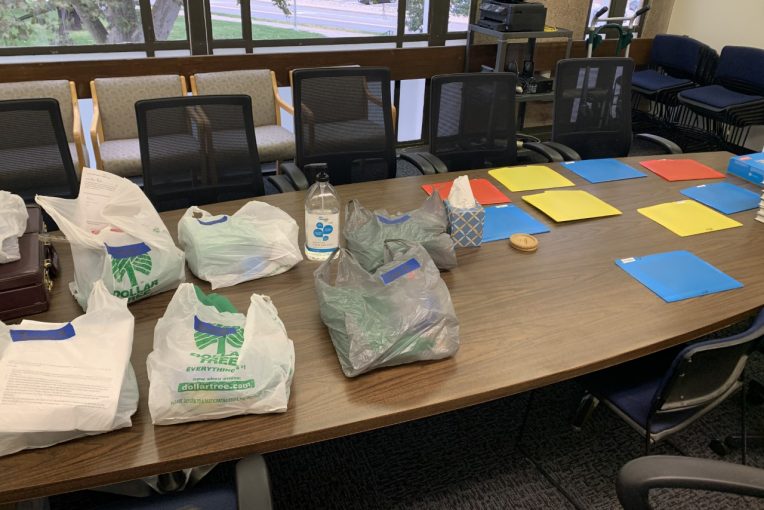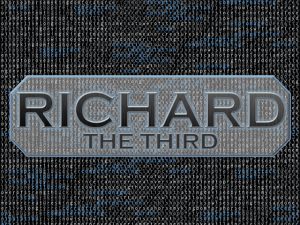The School of Theatre and Dance begins virtual performances of William Shakespeare’s Richard III on Thursday, October 29. The play will be presented in two parts: Part One runs Oct. 29-31 with the story continuing with Part Two on November 5-7. All performances are at 7:30 p.m. Performances are free and are limited to the first 300 registrants.
The play’s central character Richard, the power-hungry Duke of Gloucester, is played by senior acting major Jack Hradecky, who audiences may remember from his spring 2019 role in Harvey. Richard resents his brother’s peaceful reign over England and secretly begins to make plans for the throne, killing anyone who prevents him from achieving his goal for the crown. Richard’s tyrannical escapades, fantasies of total domination, and manipulative tendencies have made him one of Shakespeare’s most notable villains.
Directed by faculty member John Tovar, Richard III is the School of Theatre and Dance’s second virtual production this fall, following Pipeline which opened October 22. Through the magic of Zoom webinar, 24 School of Theatre and Dance students will take the virtual stage and bring Richard’s world to life.
In the middle of a pandemic, how do you safely produce this 400-year-old, yet disturbingly relevant, story? The answer is through virtual collaboration, innovative design, green screens, and many light gels. The School of Theatre and Dance’s faculty, staff, and students’ dedication to collaboration was tenacious as ever this fall, as they tackled what it meant to “set the stage” in a new way.
Design elements like prop, scenic, costume, makeup, and lighting design were re-imagined to fit the virtual format–with each area adjusting needs along the way.
Setting the stage for Richard III meant hand selecting light gels (which change the color and tone of light) for student actors to creatively light the performing space inside their home or apartment, or in a safely isolated classroom on campus. Each actor was supplied with a light/gel tracking sheet, with instructions on where, when, and how to set their gel. For instance, Hradecky sets around 27 gels within the 14 scenes he appears in. With a total of 24 actors, around 128 total gels will be set by these dedicated students.
Props such as tin mugs and daggers were packaged by prop masters and labeled for each student to pick-up on campus, or mailed to students who are performing from outside of Bloomington-Normal. Each actor received a fabric green screen, masking tape, and clear instructions on how to hang their new “set.” Forty total background images were selected by a designer, cued up, and made ready for the live stream.
While Shakespearean theatre is sometimes imagined in Elizabethan dress, the Theatre and Dance’s production is set in a modern-day corporate environment, resulting in costumes reflective of today’s business casual attire. Costuming was a collaborative effort between designer and actor–taking into account of what actors could pull from their own closets in addition to more specific pieces supplied from the costume shop. Around 156 costume pieces complete the designs for the acting company.

Props and lighting gels awaiting pickup by actors in the School of Theatre and Dance’s conference room.
For hair and makeup, designers provided each actor with descriptions of hair styles and makeup placement, including what page number in the script the specific look needed to be executed. A description of Richard’s look includes “high-defined jaw, cheekbone, and temple manipulations; broken/crooked nose; and rigid, gelled-back hair.” Out of 24 actors, 11 rely on their own skills to make hair or makeup changes within the show. While courses in stage makeup are a required element of the acting major’s curriculum, productions usually have technical staff who assist and oversee the makeup process for each performance. For virtual performances, actors will be relying on their own skills.
The final and perhaps most invisible group of necessary players for this production are the student stage managers and faculty production manager and technical directors, all stationed in a control room on campus and working together to maintain a seamless professional production. With just six weeks to learn the technology, virtual productions present a steep learning curve for the technical staff, who have to navigate and manage the virtual space–spotlighting Zoom videos or rearranging actors’ spaces in the main webinar portal, for example, while maintaining the rhythm of the story.
So: 24 actors, 25 different locations, 128 light gels, 40 background images, 156 costume pieces, 11 hair and makeup changes, and a control room are what it has taken to successfully mount one intriguing virtual play. Register now to witness Richard’s tyranny in two parts.
Richard III has been made available at no cost due to the generosity of donors who regularly support the School of Theatre and Dance. Please consider making a gift to help support future programs.


